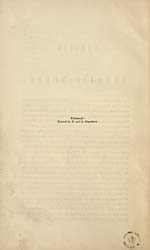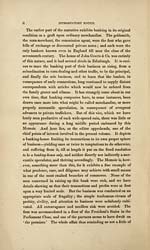Memoirs of a banking house
(7) [Page i] - Introductory notice
Download files
Complete book:
Individual page:
Thumbnail gallery: Grid view | List view
![(7) [Page i] - Introductory notice](https://deriv.nls.uk/dcn17/9495/94956188.17.jpg)
INTRODUCTORY NOTICE.
The public is here presented with a Memoir, the genuine composi-
tion of Sir William Forbes, regarding the history of a mercantile
establishment, of which he was long the chief. The manuscript
having been accidentally shewn to the editor, he saw in it so much
that was interesting, as to be induced to plead with Sir William's
surviving friends for permission to place it before the world. It
is consec[uently published at the distance of fully fifty-six years
from the time when it was Avritten, for the author appears to have
closed his narration in May 1803.
The private banking-house so long known in Scotland in con-
nection with the name of Sir William Forbes — merged since 1838
in the joint-stock Union Bank of Scotland — ^had a somewhat com-
plicated genealogy, reaching far back in the last century — the
century of progress in Scotland — and even faintly gleaming through
the obscurities of the one before it, when mercantile efforts and
speculations Avere taking their birth amidst the embers of scarcely
extinct civil Avars and all kinds of private barbarisms. The
genealogy is here traced through a firm styled John Coutts & Co.,
of which the principal member was John Coutts, lord-provost of
Edinburgh in the years 1742 and 1743, to Patrick Coutts, Avho
carried on considerable merchandise at Montrose in the reign of
William III. The concern is shewn as the main stock from which
branched off the eminent London banking firms of Coutts & Co.,
Strand, and Hcnies & Co., St James's Street.
The public is here presented with a Memoir, the genuine composi-
tion of Sir William Forbes, regarding the history of a mercantile
establishment, of which he was long the chief. The manuscript
having been accidentally shewn to the editor, he saw in it so much
that was interesting, as to be induced to plead with Sir William's
surviving friends for permission to place it before the world. It
is consec[uently published at the distance of fully fifty-six years
from the time when it was Avritten, for the author appears to have
closed his narration in May 1803.
The private banking-house so long known in Scotland in con-
nection with the name of Sir William Forbes — merged since 1838
in the joint-stock Union Bank of Scotland — ^had a somewhat com-
plicated genealogy, reaching far back in the last century — the
century of progress in Scotland — and even faintly gleaming through
the obscurities of the one before it, when mercantile efforts and
speculations Avere taking their birth amidst the embers of scarcely
extinct civil Avars and all kinds of private barbarisms. The
genealogy is here traced through a firm styled John Coutts & Co.,
of which the principal member was John Coutts, lord-provost of
Edinburgh in the years 1742 and 1743, to Patrick Coutts, Avho
carried on considerable merchandise at Montrose in the reign of
William III. The concern is shewn as the main stock from which
branched off the eminent London banking firms of Coutts & Co.,
Strand, and Hcnies & Co., St James's Street.
Set display mode to:
![]() Universal Viewer |
Universal Viewer | ![]() Mirador |
Large image | Transcription
Mirador |
Large image | Transcription
Images and transcriptions on this page, including medium image downloads, may be used under the Creative Commons Attribution 4.0 International Licence unless otherwise stated. ![]()
| Histories of Scottish families > Memoirs of a banking house > (7) [Page i] - Introductory notice |
|---|
| Permanent URL | https://digital.nls.uk/94956186 |
|---|
| Description | A selection of almost 400 printed items relating to the history of Scottish families, mostly dating from the 19th and early 20th centuries. Includes memoirs, genealogies and clan histories, with a few produced by emigrant families. The earliest family history goes back to AD 916. |
|---|

